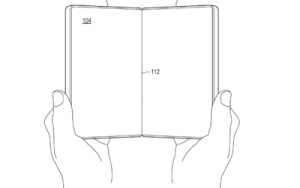Think glass is safer than plastic? It might contain more cancer-linked microplastics; study says
A recent study conducted by France's food safety agency, ANSES, has revealed a surprising finding: glass bottles may contain significantly higher levels of microplastics compared to plastic bottles or cans. This discovery challenges previous assumptions about the safety of beverage packaging.
Microplastics found in glass bottles could pose health risks
On average, glass bottles containing soft drinks, lemonade, iced tea, and beer were found to have approximately 100 microplastic particles per liter. This is up to 50 times greater than the levels found in plastic bottles or metal cans. Initially, researchers anticipated that plastic bottles would be the primary source of microplastic contamination.
This unexpected result highlights a previously overlooked pathway of contamination during the bottling and storage processes. The findings could have significant implications for consumer health and the standards governing packaging.
Unexpected High Levels of Microplastics in Glass Bottles
The ANSES study involved analyzing a variety of popular beverages, including soda, beer, lemonade, iced tea, water, and wine, all sold in various packaging types across France. The results indicated that glass bottles contained an average of around 100 microplastic particles per liter, while plastic bottles and cans showed levels that were five to fifty times lower.
Among the beverages tested, beer bottles exhibited some of the highest microplastic counts, averaging approximately 60 particles per liter. Water, on the other hand, had the lowest levels of contamination, ranging from 1.6 to 4.5 particles per liter depending on the container. Wine contained very few microplastics, even when bottled in glass with caps.
What is the Source of Plastic in Glass Bottles?
Detailed analysis revealed that the microplastics found in glass-bottled drinks matched the shape, color, and polymer composition of the paint used on the metal caps that seal the bottles. The caps experience friction and rubbing during storage and transport, leading to microscopic scratches that release tiny plastic particles into the beverages.

Source of microplastics in glass bottles traced to cap paint
These microplastics are invisible to the naked eye, yet they contaminate the drinks during bottling and storage. Tests have demonstrated that cleaning the caps or improving their storage conditions could potentially reduce microplastic contamination, suggesting possible mitigation strategies for manufacturers.
Implications and Future Directions
While the study clearly indicates higher microplastic contamination in glass bottles due to cap paint, the health risks associated with these levels remain uncertain due to a lack of toxicological reference data. These findings challenge the widely held belief that glass packaging is inherently safer or cleaner than plastic.
Researchers recommend further investigation into the impact of microplastics on human health and urge improvements in packaging materials and storage practices to minimize contamination. This study may prompt regulatory bodies and manufacturers to re-evaluate the design and materials used in beverage packaging to ensure consumer safety.
Newer articles
Older articles
-
 How do graphic designers convert JPG to PDF (Portable Document Format)?
How do graphic designers convert JPG to PDF (Portable Document Format)?
-
 Priyanka Chopra reveals daughter Malti Marie has started school in New York: 'Her schedule is even crazier than mine'
Priyanka Chopra reveals daughter Malti Marie has started school in New York: 'Her schedule is even crazier than mine'
-
 Mahbub Anam replaces Faruque Ahmed as new BPL chairman
Mahbub Anam replaces Faruque Ahmed as new BPL chairman
-
 This new AI tool can help you book train tickets, get refunds and check details on IRCTC website and app
This new AI tool can help you book train tickets, get refunds and check details on IRCTC website and app
-
 Salman Khan reveals struggle with AVM and brain aneurysm on Kapil Sharma Show: Know what AVM is, its causes, and why it's so serious
Salman Khan reveals struggle with AVM and brain aneurysm on Kapil Sharma Show: Know what AVM is, its causes, and why it's so serious
-
 Karisma Kapoor's ex-husband Sunjay Kapur's alleged last rescue clip shows him getting CPR on the ground - WATCH VIDEO
Karisma Kapoor's ex-husband Sunjay Kapur's alleged last rescue clip shows him getting CPR on the ground - WATCH VIDEO
-
 Mom-to-be Malvika Raaj shares dreamy pictures from her 'Godh Bharai' ceremony with Guruji Satsang
Mom-to-be Malvika Raaj shares dreamy pictures from her 'Godh Bharai' ceremony with Guruji Satsang
-
 Twitter bans over 5 lakh accounts in India, here's why
Twitter bans over 5 lakh accounts in India, here's why
-
 Microsoft plans to take on iPhone and Android smartphones with this new device
Microsoft plans to take on iPhone and Android smartphones with this new device
-
 Government issues warning for these Android smartphone and tablet users
Government issues warning for these Android smartphone and tablet users